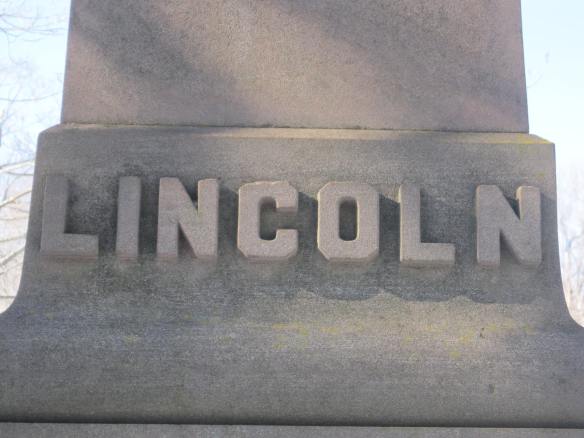 In the center of Northfield’s small triangular green sits the borough’s Civil War monument. While notable for the beautiful flame finial at its top, what really makes this monument remarkable is the story of its origin.
In the center of Northfield’s small triangular green sits the borough’s Civil War monument. While notable for the beautiful flame finial at its top, what really makes this monument remarkable is the story of its origin.
 Looking to memorialize the men from Northfield who died during the war, a committee was chosen from a public meeting held at Northfield’s center schoolhouse on January 16, 1866.
Looking to memorialize the men from Northfield who died during the war, a committee was chosen from a public meeting held at Northfield’s center schoolhouse on January 16, 1866.
 This was only nine months after Lee’s surrender at Appomattox, making this one of the oldest Civil War monuments in the country.
This was only nine months after Lee’s surrender at Appomattox, making this one of the oldest Civil War monuments in the country.
 The site was chosen because it the Episcopal church had recently moved. Nelson Bolles of Marbledale executed a design for a brownstone obelisk, and a team of thirteen oxen driven by Northfield resident Joel Thorpe brought the monument to Northfield. Julius Grover, a sculptor whose niece lived in Northfield, carved the remarkable flame finial, which perhaps serves as an eternal flame, reminding future generations of the sacrifices of Northfield’s men in the Civil War.
The site was chosen because it the Episcopal church had recently moved. Nelson Bolles of Marbledale executed a design for a brownstone obelisk, and a team of thirteen oxen driven by Northfield resident Joel Thorpe brought the monument to Northfield. Julius Grover, a sculptor whose niece lived in Northfield, carved the remarkable flame finial, which perhaps serves as an eternal flame, reminding future generations of the sacrifices of Northfield’s men in the Civil War.
 The names of the dead are carved on three sides of the monument, and are joined by the name “LINCOLN”, whose assassination was still fresh in people’s minds. Also carved on the monument are the words “That the generations to come might know them,” taken from Psalm 78.
The names of the dead are carved on three sides of the monument, and are joined by the name “LINCOLN”, whose assassination was still fresh in people’s minds. Also carved on the monument are the words “That the generations to come might know them,” taken from Psalm 78.

The men listed on the Northfield monument are:
Morton Castle, died of wounds received at the Battle of Antietam
Charles Castle, died in a Virginia hospital
Horace Hubbard, killed at Winchester
Hiram Cooley, killed at Winchester
David Wooster, killed at Fisher’s Hill
Walter Hale, killed at Chancellorsville
Joseph Camp, killed at Cold Harbor
Henry Miner, died in a Virginia hospital
Apollos Morse, killed at Cold Harbor
 While the committee hoped the monument would be in place by July 4th, 1866 (the nation’s 90th birthday), delays postponed the dedication until September. Still, Northfield’s monument was dedicated eight years before Litchfield’s Civil War monument, and twenty years ahead of the nationwide movement to memorialize its Civil War dead.
While the committee hoped the monument would be in place by July 4th, 1866 (the nation’s 90th birthday), delays postponed the dedication until September. Still, Northfield’s monument was dedicated eight years before Litchfield’s Civil War monument, and twenty years ahead of the nationwide movement to memorialize its Civil War dead.
(NOTE: The Civil War monument in Berlin, Connecticut, erected in July 1863, is believed to be the oldest in the country. See The Hartford Courant, March 24, 2013.)





